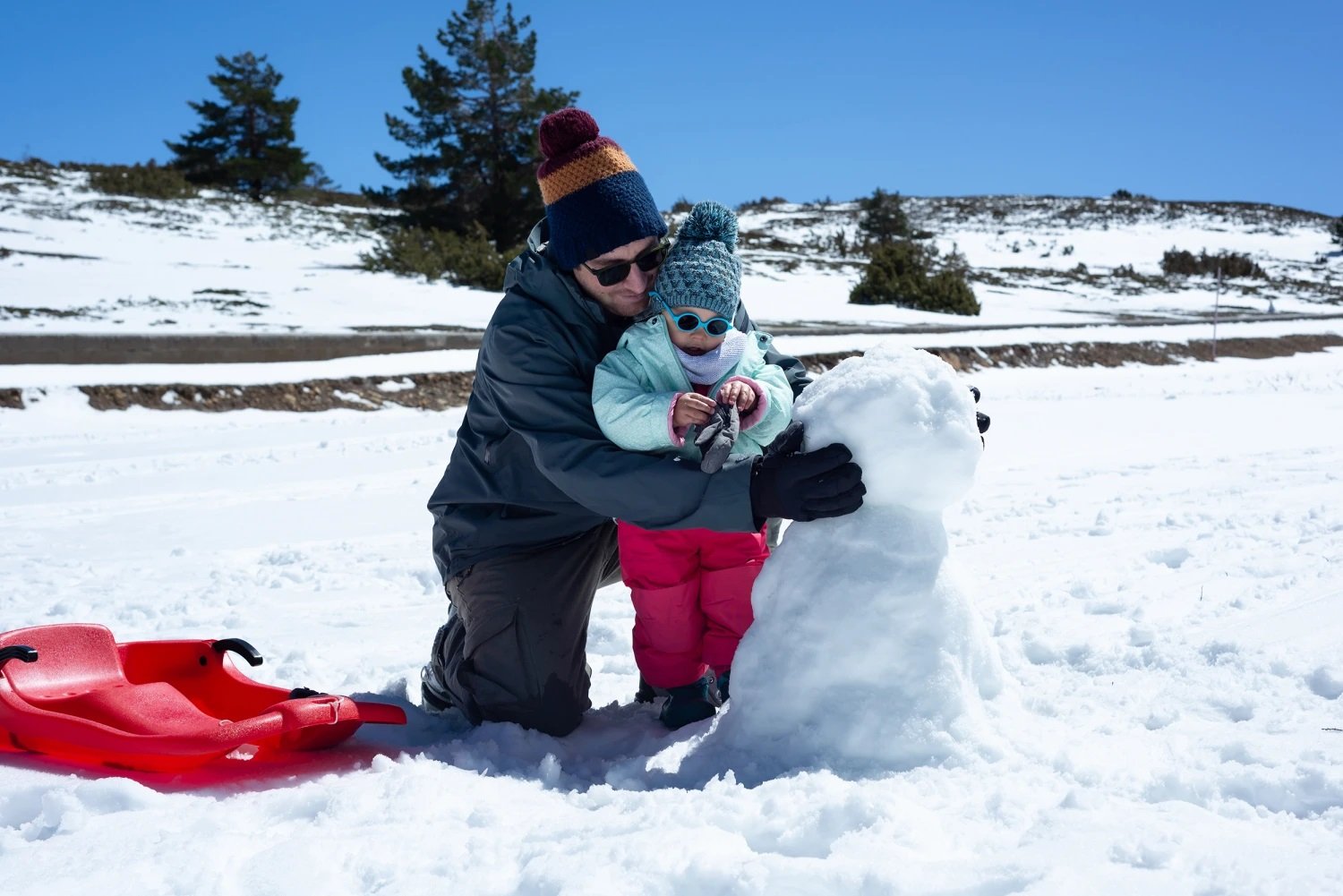
Winter is a magical season filled with chilly temperatures, frosty landscapes, and plenty of fun activities for kids to enjoy. As the snow falls and the air becomes crisp, it’s the perfect time to explore the wonders of winter. Whether they’re building snowmen, going sledding, or sipping hot cocoa by the fire, children are captivated by the enchantment of the season.
In this article, we have compiled 20 fascinating and fun facts about winter that will surely pique the interest of kids. From learning about how snowflakes form to discovering the amazing adaptations of animals in the winter, these facts will not only entertain young minds but also provide them with a deeper understanding of this chilly season.
Key Takeaways:
- Winter is a season of contrasts, with snow in one hemisphere and sunshine in the other. It’s a time for hibernation, hot chocolate, and fun winter sports like ice skating and snowboarding.
- Animals and humans alike adapt to survive the cold, from evergreen trees to migrating birds. Winter brings holidays, snow days, and the chance to marvel at the beauty of icicles and starry skies.
The Northern and Southern Hemispheres experience winter at different times.
Did you know that when it’s winter in the Northern Hemisphere, it is summer in the Southern Hemisphere? The tilt of the Earth’s axis causes this seasonal difference.
Snowflakes are actually ice crystals.
No two snowflakes are alike! Each snowflake has a unique pattern because of the way ice crystals form when water vapor freezes.
The Winter Olympics are held every four years.
Athletes from around the world gather to compete in various winter sports like skiing, snowboarding, ice hockey, and figure skating. The next Winter Olympics will be held in 20 Fun Facts For Kids About Winter in 2022.
Hibernation is a common winter survival strategy.
Many animals, such as bears and squirrels, hibernate during winter to conserve energy and survive the cold temperatures when food is scarce.
The Winter Solstice is the shortest day of the year.
This occurs on December 21st or 22nd in the Northern Hemisphere and marks the beginning of winter. It is the day with the least amount of daylight.
Ice skating has been around for thousands of years.
The Dutch are credited with inventing ice skates around the 13th century. Today, ice skating is a popular winter activity enjoyed by people of all ages.
Evergreen trees stay green during winter.
Unlike deciduous trees that lose their leaves in winter, evergreen trees such as pine and spruce retain their green foliage all year round.
Hot chocolate is a beloved winter beverage.
There’s nothing quite like sipping on a warm cup of hot chocolate topped with marshmallows on a chilly winter day.
Snowstorms can create beautiful winter landscapes.
After a heavy snowfall, trees, houses, and streets are covered in a pristine white blanket, turning the surroundings into a winter wonderland.
Animals have different adaptations to survive winter.
Some animals, like the Arctic fox, have thick fur and layers of fat to stay warm, while others, like the ptarmigan, change their feathers to white to blend in with the snowy landscape.
Winter clothing can include hats, gloves, scarves, and boots.
These essentials help keep us warm and protected from the cold winter temperatures.
Shoveling snow can be a great form of exercise.
Did you know that shoveling snow can burn as many calories as running? So, grab a shovel and stay active during the winter months!
Snow days mean no school!
When heavy snowfall occurs, schools often close, giving kids a day to play outside, build snowmen, and engage in snowball fights.
Ice sculptures are works of art.
Using chisels, chainsaws, and other tools, artists carve intricate designs out of blocks of ice, creating stunning sculptures that can be seen at winter festivals and events.
Popular winter holidays include Christmas and New Year’s.
These holidays bring joy, excitement, and the opportunity to spend time with family and friends. Gift exchanges and festive decorations are a hallmark of this season.
Snowboarding is a thrilling winter sport.
Strapping on a snowboard and gliding down slopes covered in fresh powder is an exhilarating experience for thrill-seekers.
Some animals change their behavior in winter.
For example, birds migrate to warmer regions, and squirrels gather food and create caches to sustain themselves during the cold months.
The longest icicle ever recorded was over 18 feet long.
In 1996, an icicle in the state of Wisconsin, USA, measured an astonishing 55.5 inches in circumference and 18 feet and 5.5 inches in length.
Winter skies are perfect for stargazing.
Clear, cold winter nights offer stunning views of the stars, constellations, and even the possibility of witnessing a meteor shower.
Chinese New Year is often celebrated during winter.
Also known as the Spring Festival, this important holiday is based on the lunar calendar and usually falls between January 21st and February 20th.
These fun facts about winter show just how fascinating and diverse this season is. From snowflakes to winter sports, there’s always something exciting to learn and enjoy during this time of year. So bundle up, grab a cup of hot chocolate, and embrace the wonders of winter!
Conclusion
In conclusion, winter is a fascinating season filled with fun and excitement for kids. From the magical snowflakes to the thrilling winter sports, there is always something for children to enjoy during this time of the year. They can explore the wonders of nature, participate in festive activities, and learn about different winter traditions from around the world. Whether it’s building snowmen, sledging down snowy hills, or tasting delicious hot chocolate, winter offers endless opportunities for kids to create lasting memories. So bundle up, put on your mittens, and embrace the wonders of winter!
FAQs
1. Why is winter cold?
Winter is cold because the Earth’s axis is tilted away from the sun during this season. This tilt reduces the direct sunlight that reaches the Earth’s surface, resulting in lower temperatures.
2. Can it snow in all parts of the world during winter?
No, it cannot snow in all parts of the world during winter. Snow requires specific weather conditions, including low temperatures and moisture. So, regions closer to the Earth’s poles and higher altitudes are more likely to experience snowfall during winter.
3. What are some fun winter activities for kids?
There are plenty of fun winter activities for kids, such as building snowmen, ice skating, skiing, snowboarding, sledding, and having snowball fights. Indoor activities like baking cookies, crafting, and reading winter-themed books can also be enjoyable during this season.
4. Why do some animals hibernate during winter?
Some animals hibernate during winter to conserve energy and survive the harsh conditions. By entering a state of deep sleep, they can reduce their metabolic rate and live off their fat reserves until warmer weather returns.
5. What are some winter holidays celebrated around the world?
Winter holidays celebrated around the world include Christmas, Hanukkah, Diwali, Kwanzaa, and New Year’s Eve. Each holiday has its own traditions, customs, and celebrations, making winter a festive and joyous time for people of different cultures.
Was this page helpful?
Our commitment to delivering trustworthy and engaging content is at the heart of what we do. Each fact on our site is contributed by real users like you, bringing a wealth of diverse insights and information. To ensure the highest standards of accuracy and reliability, our dedicated editors meticulously review each submission. This process guarantees that the facts we share are not only fascinating but also credible. Trust in our commitment to quality and authenticity as you explore and learn with us.


